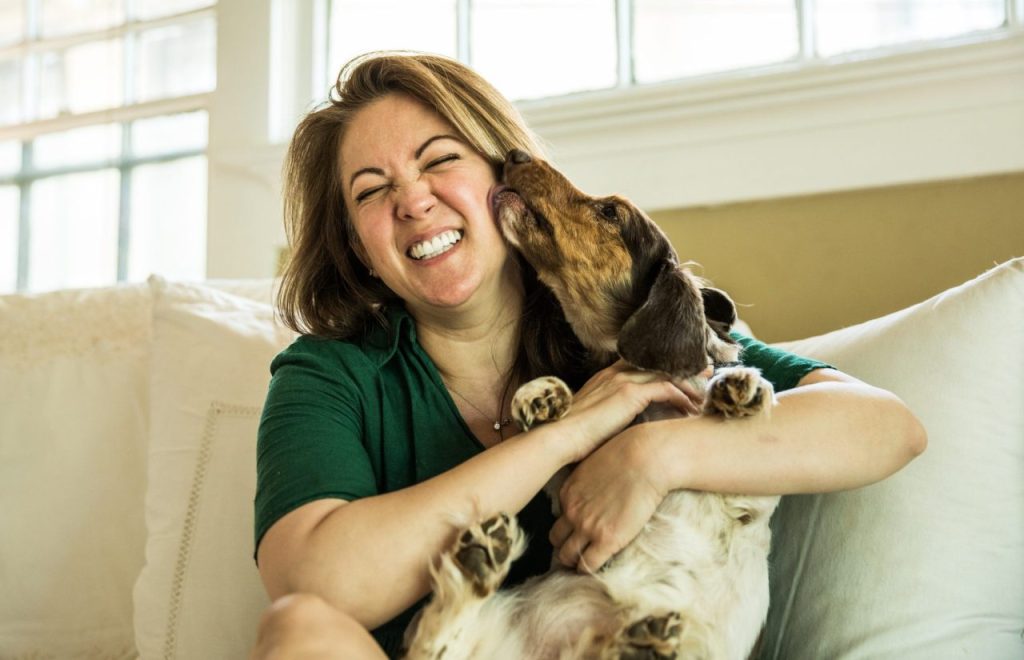Becoming a dog foster parent is a rewarding and fulfilling way to make a difference in the lives of dogs in need. By opening your home and heart to a foster dog, you provide temporary care and love to an animal awaiting their forever home. If you’re passionate about helping dogs and are considering becoming a dog foster parent, this guide will walk you through the steps to get started on this incredible journey.
Why become a dog foster parent?
Becoming a dog foster parent offers numerous benefits and rewards. By opening your home to a foster dog, you save fur babies, make a positive difference in their lives, and experience the joy of seeing a traumatized or abandoned dog transform into a happy and confident canine companion. What’s more, fostering can teach you a lot about what it takes to be a good dog parent so you can be fully prepared before you commit to adopting a pup of your own. Additionally, fostering allows you to experience the traits and personalities of different dog breeds from an array of backgrounds. Fostering is a fulfilling learning experience that will leave a lasting impact on both you and the dogs you foster.
So what do you need to do to become a dog foster parent? These are the usual steps.
How to foster a dog
1. Research local rescue organizations
The first step in becoming a dog foster parent is to research local rescue organizations in your area. Find out what rescue groups operate near you and learn about their specific programs and requirements for foster parents. Each organization may have different guidelines and resources available. Look into the types of dogs they rescue, the support they provide, and any specific foster parent criteria they have in place.
2. Complete an application
Once you’ve identified a rescue organization that aligns with your values and goals, the next step is to complete a dog foster parent application. This application allows the rescue organization to gather information about you, your living situation, and your experience with dogs. Be honest and thorough in your responses to help them match you with an appropriate foster dog.
3. Attend orientation or training
Many rescue organizations offer orientation sessions or training workshops for prospective foster parents. These sessions are designed to provide you with essential information on dog care, fostering protocols, and how to handle different situations that may arise. Attending these sessions will equip you with the knowledge and skills necessary to provide the best care for your foster dog.
4. Participate in a home visit
To ensure the safety and suitability of your home for a foster dog, a representative from the rescue organization may conduct a home visit. This visit allows them to assess the environment and ensure it is safe, secure, and suitable for a dog. They may also provide suggestions or recommendations to make your home more comfortable for your foster pup.
5. Discuss preferences and limitations
As a foster parent, you have preferences and limitations when it comes to the type of dog you can care for. Communicate openly with the rescue organization about your preferences regarding breed, size, age, and any specific behavioral or medical needs you feel comfortable handling. This will help them match you with a foster dog that aligns with your capabilities and lifestyle. During this process, you will likely be asked to sign a foster agreement, which outlines your responsibilities as a foster parent and the rescue organization’s expectations.
6. Prepare your home for a foster dog
Before bringing a foster dog home, it’s essential to prepare your living space. Create a safe and comfortable area for the dog, complete with bedding, food and water bowls, toys, and any necessary supplies. Ensure that hazardous items are kept out of reach and that the environment is dog-friendly.
7. Provide love and care
Once your foster dog arrives, shower them with love and care. Provide a nurturing and supportive environment, including regular feeding, exercise, and potty breaks. Groom the dog regularly and attend any required veterinary appointments. Work on basic training and socialization, helping the dog build confidence and learn new skills. Offer plenty of playtime and mentally stimulating toys.
8. Meet adoptive families
As a foster, you’ll likely be the facilitator for potential adoptive families to get to know the dog in your care. The rescue organization will likely have a protocol for you to follow, which may include a phone interview with the family followed by an in-person meet-and-greet. Make sure your foster dog makes a good first impression. Groom your foster dog and take them out for a potty break before they meet a potential adoptive family. Play up the dog’s strengths, but also be honest about the dog’s behavior and personality. Ask questions to determine if the family is a good fit and give timely feedback to the rescue.
9. Maintain open communication
Communication with the rescue organization is vital throughout the fostering process. Keep them informed about the dog’s behavior, any health concerns, or changes in their needs. In turn, the rescue should provide guidance, resources, and support as needed. Regular check-ins and progress updates ensure that you and the rescue organization are working together to provide the best care possible for the foster dog.
10. Learn to let go
If the foster process is successful, you will likely have to say goodbye to your now-beloved foster pup. While finding a forever home is a joyous occasion for the dog and their new family, letting go might be rough on you. Allow yourself the time and space to grieve before you welcome a new foster dog into your home.
Becoming a dog foster parent is an incredibly rewarding experience that can make a significant difference in the life of a dog. Though there will likely be challenges and a lot of emotions along the foster journey, remember that every dog you foster is a life you touch and transform.









